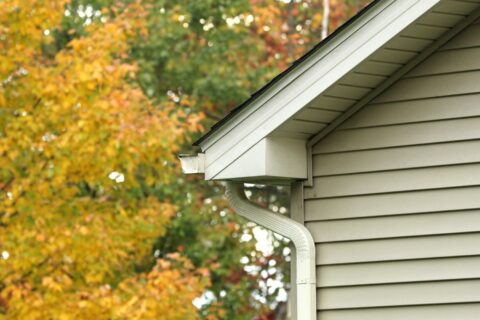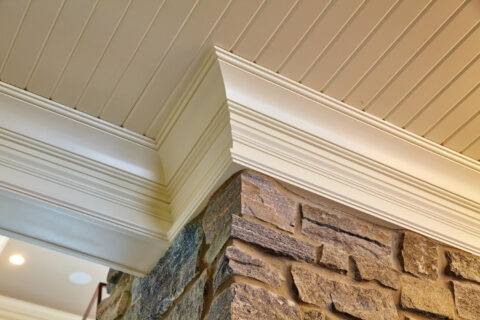Why Ventilated Soffits Are Crucial for Attic Health
Maintaining a healthy attic is essential for the overall well-being of your home. Attics play a crucial role in regulating indoor temperatures and protecting the structural integrity of your house. One often overlooked component that significantly impacts attic health is the soffit. Soffits serve as a breathable barrier between your attic and the outdoors, facilitating proper air circulation. Without proper ventilation, your attic can become a breeding ground for various issues like mould, mildew, and even structural damage.
Ventilated soffits enable a constant flow of air, which helps to regulate temperature and control moisture levels inside the attic. This airflow prevents heat build-up in the summer and moisture accumulation in the winter, both of which can wreak havoc on your home’s structure. Efficient attic ventilation provided by ventilated soffits can also extend the life of your roof, lowering the risk of costly repairs or replacements.
This article will delve into the importance of ventilated soffits for attic health, highlighting their function, the benefits of proper attic ventilation, common issues caused by poor ventilation, and tips for choosing and installing ventilated soffits. By understanding these aspects, you can make informed decisions to ensure your attic stays in optimal condition, contributing to the overall energy efficiency and longevity of your home.
Understanding Ventilated Soffits and Their Function
Ventilated soffits are a vital component of your home’s roofing system. They are installed under the eaves of your roof and serve the primary function of allowing air to circulate through your attic. This ventilation is crucial as it helps to regulate temperature and humidity levels within the attic space. Without ventilated soffits, your attic can become a hotbed for a variety of issues that can affect the overall health of your home.
The soffits work by enabling fresh air to enter the attic while pushing out stale, moist air. This exchange of air is essential for maintaining a balanced and healthy attic environment. By allowing cooler air to flow in from the outside and warmer air to escape, ventilated soffits help to prevent the accumulation of heat and moisture. This, in turn, helps to protect the structural integrity of your roof and enhances the longevity of roofing materials.
Benefits of Proper Attic Ventilation
Temperature Regulation
One of the key benefits of proper attic ventilation is temperature regulation. During the summer, attics can become extremely hot, causing your air conditioning system to work harder to maintain a comfortable temperature inside your home. This not only increases your energy bills but can also place undue strain on your cooling system. Ventilated soffits help to vent out this excess heat, thereby reducing your cooling costs and improving energy efficiency.
Moisture Control
Moisture control is another critical benefit of well-ventilated soffits. In the winter, warm air from your home can rise into the attic and, if not properly vented, can condense on the colder surfaces. This condensation can lead to mould and mildew growth, which pose serious health risks and can damage the structural components of your home. Ventilated soffits allow this moist air to escape, preventing condensation build-up and thus minimizing the risk of moisture-related problems.
Effective attic ventilation through the use of ventilated soffits can significantly enhance both the comfort and the durability of your home. By regulating temperature and controlling moisture levels, you can protect your attic and roofing system from damage while also improving energy efficiency and air quality within your living spaces.
Common Issues Caused by Poor Ventilation
Mould and Mildew Growth
One of the most common issues caused by poor ventilation is the growth of mould and mildew. When your attic lacks proper ventilation, moisture can accumulate and create a damp environment. This dampness provides the ideal conditions for mould and mildew to thrive. Mould and mildew not only pose health risks, such as respiratory problems and allergies, but they can also emit unpleasant odours. These fungal growths can spread to other parts of your home, making it essential to address ventilation issues promptly.
Structural Damage
Poor attic ventilation can also lead to significant structural damage over time. Without proper airflow, moisture can accumulate on wooden beams, insulation, and other structural components. This trapped moisture can cause wood to rot and weaken, compromising the integrity of your home’s structure. Moreover, excessive moisture can also lead to rusting of metal elements and deterioration of insulation. Addressing ventilation problems is crucial to preventing long-term damage and maintaining the safety and stability of your home.
Choosing and Installing Ventilated Soffits
Material Options
Choosing the right material for your ventilated soffits is important for both functionality and aesthetics. There are several options available, including vinyl, aluminium, and wood. Vinyl soffits are popular due to their durability, low maintenance, and resistance to moisture and insects. Aluminium soffits are also durable and lightweight, offering a sleek appearance. Wood soffits, while aesthetically pleasing, require more maintenance to protect against moisture and pests. Each material has its pros and cons, so consider your specific needs and regional climate when making a selection.
Installation Best Practices
Proper installation of ventilated soffits is crucial to ensure effective attic ventilation. Begin by assessing the existing ventilation and determining the required number of soffit vents to achieve balanced airflow. When installing, ensure that vents are evenly spaced to promote consistent air circulation. Avoid blocking vents with insulation or other materials, as this can impede airflow. Professional installation can help ensure that your soffits are correctly installed and functioning optimally, contributing to a healthier attic environment.
Conclusion
Ventilated soffits play a critical role in maintaining the health of your attic and, by extension, the entire home. By understanding their function and ensuring proper installation, you can reap the benefits of improved temperature regulation and moisture control. These factors help prevent issues like mould growth and structural damage, ensuring your home remains safe, comfortable, and energy-efficient.
Proper attic ventilation provided by ventilated soffits is an investment in the longevity and health of your home. If you’re looking to improve your attic’s ventilation, consider reaching out to a professional for guidance and installation. Protect your home and enhance its comfort with well-ventilated soffits.
For expert advice and quality ventilated soffit repair or installation, contact Magnum Exteriors. Our experienced team is dedicated to helping you maintain a healthy and efficient home. Let us assist you in choosing and installing the best options for your needs.


